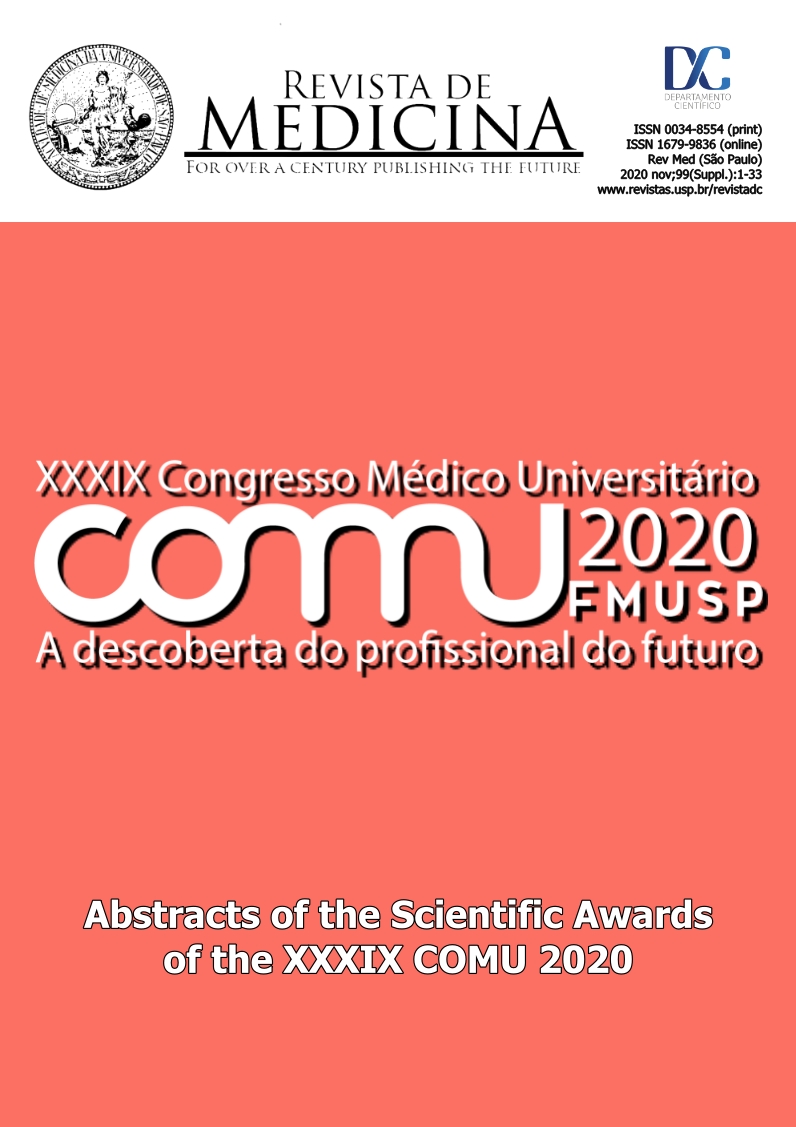Complexity in diagnosis of gastrointestinal stroma tumor (GIST): case report
DOI:
https://doi.org/10.11606/issn.1679-9836.v99iSupplp31-31Palavras-chave:
GIST, Stomach, EndoscopyResumo
Introduction: The gastrointestinal stromal tumor (GIST) represents less than 3% of gastrointestinal neoplasms; however, is the most frequent mesenchymal tumor of the digestive tract, occurs mainly in elderly adults (60-65 years). GIST is expressed by the expression of the receptor tyrosine kinase growth factor, CD117, which differentiates it from other mesenchymal tumors such as leiomyomas, leiomyosarcomas, leiomyomablastomas and neurogenic tumors that do not express this protein. The symptoms are nonspecific and computed tomography (CT) is the method of choice for the diagnosis of the lesion, and the definitive diagnosis is made through the anatomopathological study of the lesion, with surgery being the main therapeutic option.
Methodology: This is a case report, in which was recorded data from clinical observation and image exams of an individual without using a control group.
Results: E. M. A. G., 65 years old, black female, with no family history of the disease, was diagnosed 9 years ago with gastrointestinal stromal tumor (GIST). She had dysphagia and difficulty singing, which encouraged her to go to the gastroenterologist. Were done endoscopy that did not reveal any findings and ultrasound of the thyroid showing two nodules, a liquid and a solid. 10 ml of blood accumulated locally was punctured. The day after the endoscopy, the patient reported severe and diffuse pain with a maximum scale on a scale of 1 to 10. She was hospitalized and medicated with analgesic and sedative. Cardiac involvement was suspected in addition to abdominal pain. An abdominal CT scan was performed, but there were no findings. Under suspicion that the first endoscopy might have perforated some compartment, a second one was made, however it did not reveal any findings. A second CT scan was performed to assess the stomach, but found nothing unusual. During this hospitalization period, laboratory tests did not show significant changes. There was a suspension of colored foods and the use of serum for 3 days. A third abdominal CT scan was performed with the appearance of a vascularized piece adhered to the peritoneum at the outer limit of the stomach. Surgery was performed with extraction of the 150 g of GIST and the material was sent for biopsy. She remained hospitalized for another 16 days with the administration of intravenous medication and subsequent release.
Discussion: This case is interesting because it includes a rare tumor of the gastrointestinal system. Certainly, it´s important for all physicians to keep in mind GIST as a differential diagnosis in order to provide an early diagnose and, therefore, prevent complications an increase the patient´s chance of survival.
Conclusion: Clinical findings and evaluation of complementary exams were not suggestive for the diagnosis of GIST, which generated diagnostic complexity. The clinical manifestations presented at the beginning did not indicate the triggering factor to arrive at the real problem due to the few studies, the small incidence of the disease and in addition without a history of the disease in the family.
Downloads
Referências
não consta
Arquivos adicionais
Publicado
Edição
Seção
Licença
Copyright (c) 2020 Vitória Regina Nunes Maia, Hellen Araújo Nogueira, Adolfo Rodrigues de Araújo Neto, Luíza Magalhães Emerenciano, Sarah Sarah de Oliveira Rosado, Alberto Ladeia de Queiroz Filho

Este trabalho está licenciado sob uma licença Creative Commons Attribution-ShareAlike 4.0 International License.




